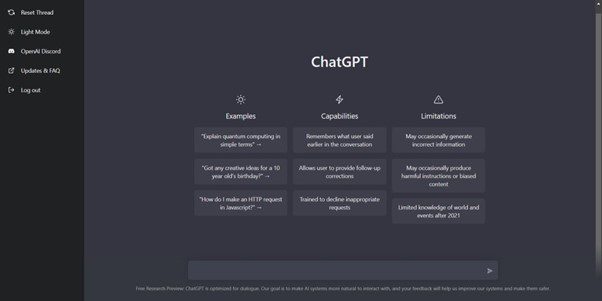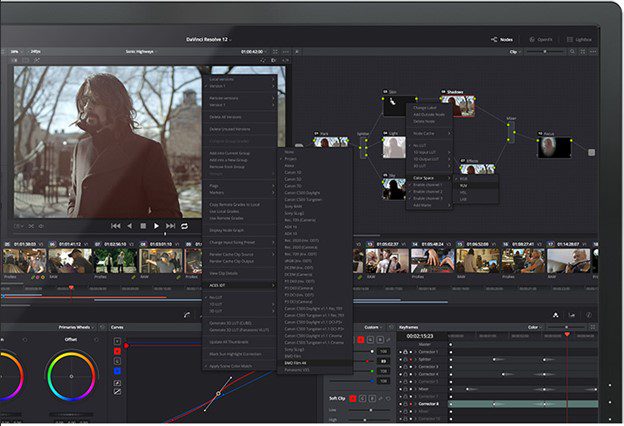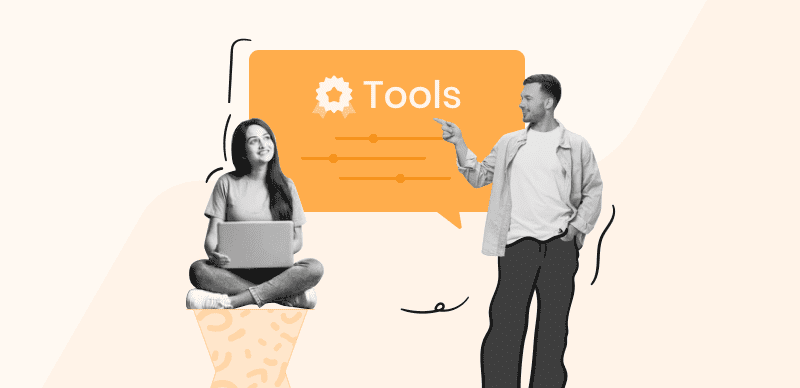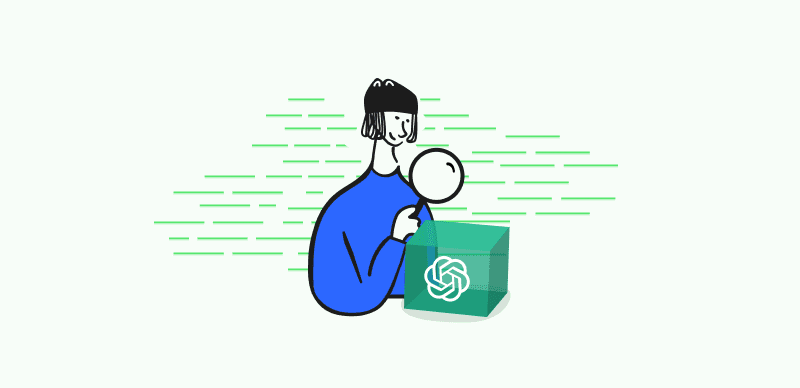ChatGPT and Davinci are two formidable competitors in AI language models, and they have fundamentally altered how humans communicate with computers. These sophisticated models have attracted much interest because of their capacity to mimic human behavior and have in-depth discussions. The purpose of this post is to compare and contrast ChatGPT Vs. Davinci to assist you in choosing the best model for your requirements.
OpenAI’s ChatGPT has made a big difference in natural language processing. ChatGPT uses the GPT architecture to learn from a large text corpus and produce natural and convincing replies. As a more sophisticated version of the GPT-3 series, Davinci demonstrates outstanding language processing skills and adaptability in several contexts. This article will provide the information to choose the AI model that best matches your needs, whether you’re searching for a conversational AI model or a language-processing powerhouse.
What Is ChatGPT?
OpenAI’s ChatGPT is a state-of-the-art artificial intelligence language model that relies on the popular GPT (Generative Pre-trained Transformer) framework. This model has received a lot of praise for its natural ability to mimic natural language patterns in its answers during dynamic and interactive dialogues. As a result of its thorough training on a massive corpus of text data, ChatGPT has a profound grasp of the linguistic structures and contexts that make up natural language.

ChatGPT Interface
ChatGPT’s unique selling point is its conversational fluency. It can carry on in-depth discussions with people, answering their questions and supplying them with relevant data on subjects. It’s great for chatbots, virtual assistants, and other conversational AI applications such as AI writing tools and AI paragraph rewriters because it generates logical and contextually appropriate texts.
A more regulated method of answer creation has been implemented in ChatGPT. To reduce the potential for biased or offensive results, OpenAI has introduced safeguards. As an example, a Moderation API might be used to flag or remove potentially harmful material.
While ChatGPT’s conversational skills are excellent, it’s important to remember that the model isn’t perfect. It depends significantly on the training data exposed, which might occasionally lead to erroneous or incoherent output. Furthermore, as an AI language model, it may lack in-depth subject knowledge and fail to answer complicated questions that fall beyond the area of its training data.
What Is Davinci?
Davinci, created by OpenAI, is the most cutting-edge artificially intelligent language processing model since the GPT-3 series began. It encapsulates state-of-the-art natural language processing and exhibits impressive ability in several areas of language study. Da Vinci is a very flexible and potent language model because of its capacity to understand and provide replies that make sense in their context. Davinci’s size and computational complexity are two of its defining characteristics. It has more model depth and capability than its forerunners because of its 175 billion parameters.

Davinci Interface
Da Vinci shines in difficult linguistic tasks like translation, summarization, sentiment analysis, and contextual comprehension. Davinci’s ability to mimic human replies and develop information that seems natural is a direct result of their intensive training, which has allowed it to demonstrate a deeper awareness of linguistic subtleties. The nuances of a text are not lost on it, and it can provide coherent and relevant replies. Davinci also provides better computational efficiency, shortening inference times and boosting processing power. As a result, users may enjoy more fluid interactions and faster answers.
However, Da Vinci’s enhanced intricacy and processing needs do not come without costs. Due to its increased size, the model requires additional processing resources, which may restrict its use in certain settings.
Further Reading: How to Add Motion Blur in Davinci Resolve >
What Is the Difference Between ChatGPT and Davinci?
OpenAI created both ChatGPT and Davinci, and they are strong AI language models, although they were designed for different purposes and have different capabilities.
✔️Size and Capacity of Models: One big difference is that the models differ in size and capacity. Da Vinci’s greater model size lets it absorb linguistic subtleties better and generates more sophisticated replies relevant to its environment. On the other hand, Da Vinci is a more complex model than the GPT-3 series typically entails, with 175 billion parameters. Unlike DaVinci, ChatGPT’s parameters are reduced while maintaining the GPT architecture’s power.
✔️Use Case Focus: ChatGPT is made especially for apps that involve conversations. Designed specifically for use in chatbots, virtual assistants, and other conversational AI applications, its main goal is to mimic human conversational behavior. It’s particularly good at having lively, interactive discussions and responding to questions and comments in a way that makes sense. However, Da Vinci is more versatile and can do more advanced language processing tasks like translation, summarization, sentiment analysis, and even more natural-sounding dialogue.
✔️Computational Requirements: Another big difference is the computing power needed to run each model. ChatGPT requires less processing power than larger implementations of PPT, making it suitable for use in programs with constrained resources. However, Davinci’s bigger model size necessitates more considerable processing power, which might restrict its availability in certain settings or uses.
✔️Training Data and Fine-Tuning: ChatGPT and DaVinci both use a lot of text data to help them learn how to understand and create words. It’s possible, however, that training and tuning procedures will be different for the two models. To guarantee the models’ efficacy and security, OpenAI uses various methods for honing and perfecting them.
Remember that if OpenAI continues to improve its models, the distinctions between ChatGPT and DaVinci may change. An application’s use case and needs should be examined thoroughly to narrow the options.
Which is Better, ChatGPT or Davinci?
Having compared ChatGPT and Google Bard, let’s compare ChatGPT and Davinci over several important criteria when assessing AI language models to see which one is superior. The advantages and disadvantages of these factors are compared in the section below.

ChatGPT Vs. Davinci
🚩 Interface
ChatGPT: With ChatGPT, users can access and directly converse with the model via a simple and easy-to-use web-based interface.
Davinci: Davinci’s user interface is designed to be intuitive, making it easy to utilize the software’s language processing features.
🚩 Supported Platform
ChatGPT: With ChatGPT, consumers may communicate with the model in real-time through a web browser. This web-based strategy reduces complexity by eliminating clients needing to download and install any extra software or have access to any APIs.
Davinci: Davinci’s API access needs may need further configuration for optimal functioning. It allows for more agency over the model’s features but requires more technological integration.
🚩 Language Understanding
ChatGPT: ChatGPT’s great contextual comprehension enables it to interpret user input and provide appropriate answers. Conversations with it are meaningful, and it responds appropriately to questions posed by the user.
Davinci: Davinci’s improved language comprehension allows it to pick up on subtleties and intricate grammatical constructions. This deeper comprehension improves the replies and allows DaVinci to provide more nuanced and accurate outputs in their contexts.
🚩 Response Quality
ChatGPT: ChatGPT is great at coming up with answers that make sense and are pertinent to the situation. It uses language-understanding skills to respond to relevant information and flow the discussion.
Davinci: When compared to ChatGPT, the quality of responses from Davinci is superior. Due to their intensive training, Davinci can produce extremely nuanced and refined outputs, capturing the nuances of language and providing more detailed and contextually appropriate replies.
🚩 Computational Requirements
ChatGPT: ChatGPT’s compact form suits it even in environments with scarce computing power. It is useful in circumstances where real-time interactions are crucial but when processing capacity is limited.
Davinci: Divinci has higher computational requirements with a larger processing capacity.
🚩 Use Case Focus
ChatGPT: ChatGPT is great for chatbots, virtual assistants, and other interactive systems that demand human-like interactions since it is built for conversational AI. It excels at engaging and responding naturally due to its conversation-centric approach.
Davinci: Davinci’s extensive language processing features make it ideal for applications requiring in-depth language interpretation and manipulation, such as translation, summarization, content development, and similar activities.
Final Thought
The decision between ChatGPT Vs. Davinci should ultimately be based on the unique needs and goals of the individual business. Consider important aspects such as performance, the availability of computing resources, and the characteristics of the language processing jobs you need to complete. You can harness the potential of AI language models more effectively if you evaluate these features and then decide which model best suits your requirements. Please share the article and must provide feedback.



